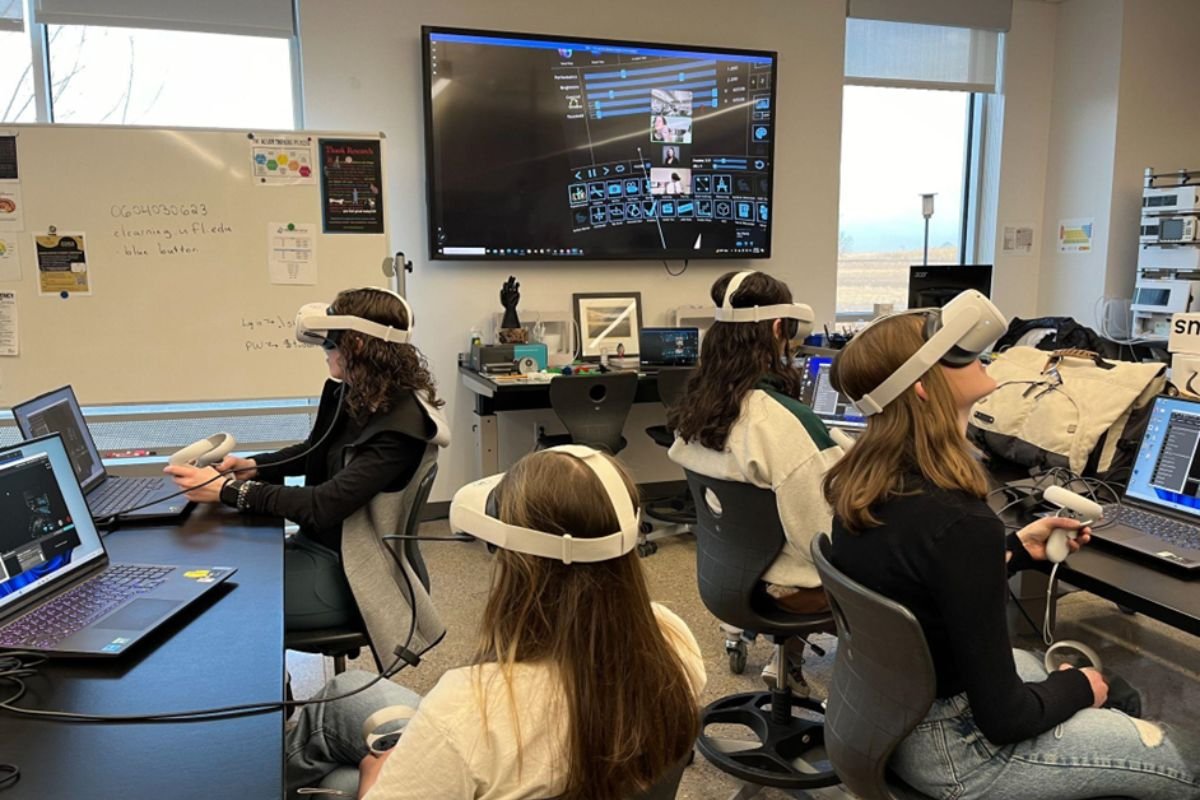Charting the Educational Horizon: High School Ventures into Real-World Research with Advanced Virtual Reality Technology and Post-Secondary Partnerships
In an innovative leap forward for high school education, the St. Vrain Valley Schools Innovation Center in Longmont, Colorado, has successfully integrated cutting-edge neuroscience research into its curriculum through a collaboration with syGlass, Inc., and the University of South Florida. This partnership has transformed the educational experience for students, allowing them to engage with real-world scientific research using advanced virtual reality (VR) technology.
At the heart of this initiative is the use of syGlass VR software, which enables students to interact with scientific data in a three-dimensional space. This immersive technology, previously inaccessible at the high school level, has opened new avenues for understanding complex biological processes. The project focused on studying the developing mouse brain, a critical area of research that provides insights into both normal and abnormal brain development. This research is essential for advancing knowledge in neurological diseases, regenerative medicine, and artificial intelligence development.
High school neuroscience students explore syGlass Virtual Reality in the Innovation Center.
Senior undergraduate students Samuel Zucker and Sophia Alonso from the University of South Florida, under the mentorship of neuroscience professor Dr. George Spirou, played a crucial role in guiding the high school students. They taught the students how to use the syGlass software to track filopodia, cell membrane protrusions that act like antennae. The students meticulously traced these structures in the developing mouse brain, calculating variables like displacement, speed, and acceleration. This hands-on experience not only enhanced their understanding of neuroscience but also equipped them with valuable research skills.
Integrating this advanced research into the curriculum was a collaborative effort. Jayme Sneider, the Innovation Center’s Bioscience Program Manager, worked closely with Bernie Barragan, syGlass Education Director, and the university mentors to ensure that the project complemented the students' existing coursework. This alignment was crucial in ensuring that students met their educational standards while engaging in collegiate-level research.
The project was made possible by the financial support of the Longmont United Hospital Foundation, which provided the necessary VR headsets, syGlass software, and other equipment. Training sessions were organized to familiarize both students and teachers with the technology and scientific methodologies. This preparation phase transformed initial bewilderment into confident anticipation, setting the stage for a successful research journey.
The students' experience was both challenging and exhilarating. They spent many hours in the VR lab, meticulously tracking growth cones and filopodia, guided by their mentors through virtual meetings and detailed instructional materials. This immersive experience honed their critical thinking, problem-solving, and data analysis skills, sparking a deeper interest in science and motivating many to pursue STEM careers.
Fluorescently labeled living neurons in the developing mouse brain.
Reflecting on the project, the students expressed their amazement at the opportunity to engage in such high-level research. They appreciated the ability to interact with data in a VR environment, which provided unique perspectives and deeper understanding. The mentors, too, found the experience enriching, learning effective communication strategies and gaining insights into engaging young minds in complex scientific endeavors.
The success of this collaboration has set a precedent for integrating real-world research into high school education. The St. Vrain School District is now looking to scale this model across its 60 schools, ensuring that all 33,000 students have similar opportunities. By fostering partnerships with universities and research institutions, the district aims to provide students with unparalleled learning experiences, preparing them for future success in STEM fields.
This initiative stands as a testament to the transformative power of educational partnerships, showcasing how immersive technology and real-world research can revolutionize high school education, paving the way for a new generation of scientists and innovators.
For more on this initiative, read the full story on School Rubric.


